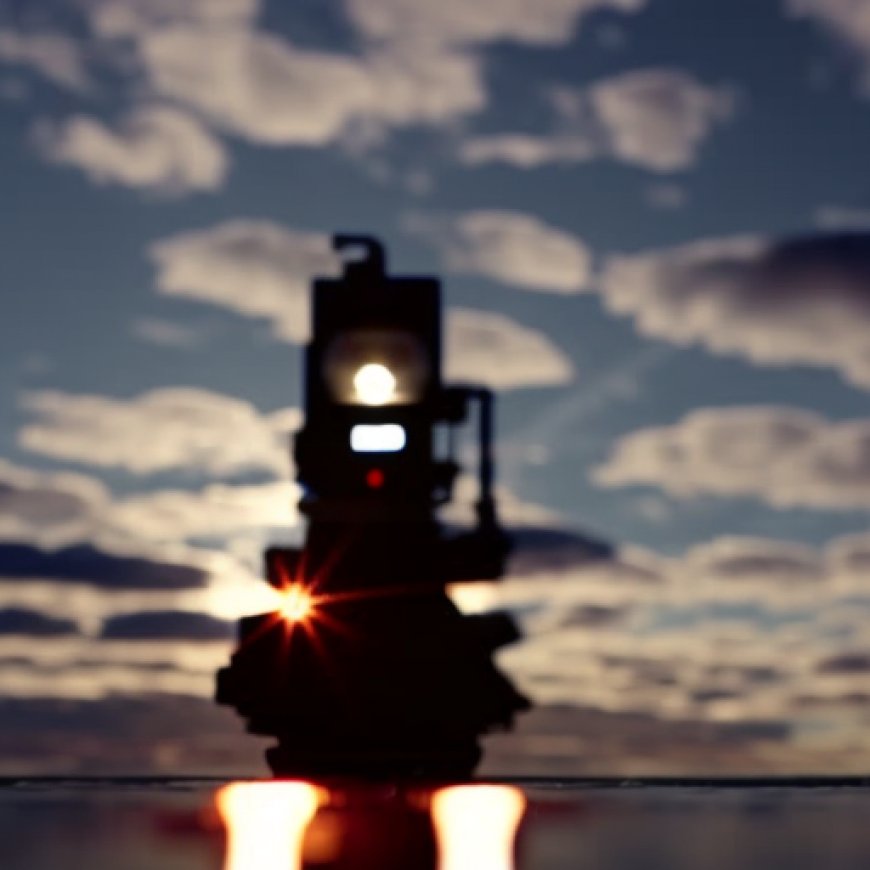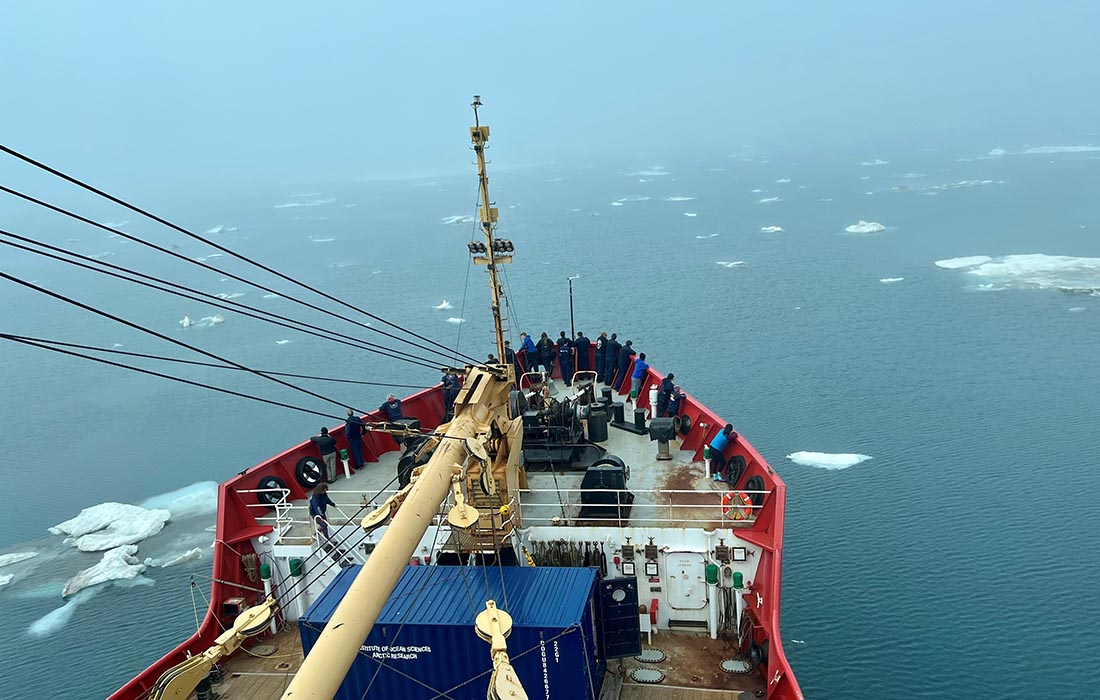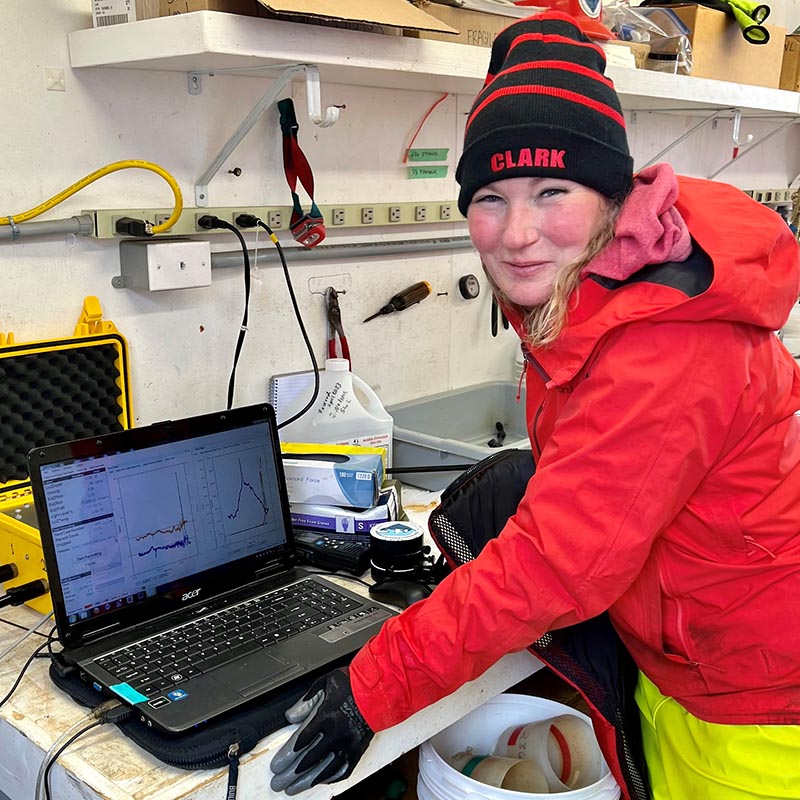New report: Warmest Arctic summer on record is evidence of climate change acceleration
New report: Warmest Arctic summer on record is evidence of climate change acceleration ClarkNow


A Report on the Arctic Report Card and the Impact of Human-Caused Warming

Introduction
A new report has highlighted the impact of human-caused warming on the Arctic region, which is experiencing faster heating compared to any other part of the world. This report emphasizes the need for action to address the challenges posed by climate change in the Arctic.
Lead Author and Arctic Report Card
Karen Frey, a polar scientist and professor at Clark University’s Graduate School of Geography, is a lead author of the Arctic Report Card. The report was recently released by the National Oceanographic and Atmospheric Administration (NOAA) at the American Geophysical Union in San Francisco. The Arctic Report Card provides comprehensive information on the transformation of the Arctic due to extreme weather and climate events.

Key Findings
The report highlights several key findings, including the record-breaking warm temperatures observed in the Arctic during the summer of 2023. Greenland’s ice sheet also experienced melting, which is a rare occurrence. The decline in sea ice extent continues, with September recording the lowest levels in the past 17 years.
One of the significant findings from Frey’s chapter in the report is the increase in ocean primary productivity, particularly in the Eurasian Arctic and Barents Sea regions. This growth in marine algae has consequences for marine ecosystems at various levels of the food web.
Impact of Algae Growth
Frey and her team have observed that the growth of marine algae is most pronounced during late summer and early fall. They have been monitoring these changes using satellite imagery for the past 18 years. The warming seawaters and sea ice decline caused by anthropogenic climate change have led to significant increases in marine algae growth across the Arctic Ocean. This growth has far-reaching impacts on marine ecosystems.
Furthermore, Professor Frey has dedicated over 25 years to studying sea ice, often conducting research aboard the Canadian vessel Sir Wilfrid Laurier alongside undergraduate and graduate students. These expeditions involve scientific studies of seawater and seafloor samples collected from various stations in the Bering and Chukchi seas.
Conclusion
The Arctic Report Card, now
SDGs, Targets, and Indicators in the Article
1. Which SDGs are addressed or connected to the issues highlighted in the article?
- SDG 13: Climate Action
- SDG 14: Life Below Water
- SDG 15: Life on Land
The article discusses the impact of human-caused warming on the Arctic region, which is directly related to climate change. Therefore, SDG 13, which focuses on climate action, is addressed. The changes in the Arctic also affect marine ecosystems and biodiversity, which are relevant to SDG 14 (life below water) and SDG 15 (life on land).
2. What specific targets under those SDGs can be identified based on the article’s content?
- SDG 13.1: Strengthen resilience and adaptive capacity to climate-related hazards and natural disasters
- SDG 14.2: Sustainably manage and protect marine and coastal ecosystems to avoid significant adverse impacts
- SDG 15.5: Take urgent and significant action to reduce degradation of natural habitats
The article highlights the need to strengthen resilience and adaptive capacity in the Arctic region due to the impacts of climate change (SDG 13.1). It also emphasizes the importance of sustainable management and protection of marine ecosystems (SDG 14.2) and the urgency to reduce degradation of natural habitats (SDG 15.5).
3. Are there any indicators mentioned or implied in the article that can be used to measure progress towards the identified targets?
- Indicator for SDG 13.1: Number of people affected by climate-related hazards and disasters
- Indicator for SDG 14.2: Percentage of marine and coastal areas protected
- Indicator for SDG 15.5: Proportion of important sites for terrestrial and freshwater biodiversity that are covered by protected areas
The article does not explicitly mention specific indicators. However, to measure progress towards the identified targets, indicators such as the number of people affected by climate-related hazards and disasters (SDG 13.1), the percentage of marine and coastal areas protected (SDG 14.2), and the proportion of important sites for biodiversity covered by protected areas (SDG 15.5) can be used.
Table: SDGs, Targets, and Indicators
| SDGs | Targets | Indicators |
|---|---|---|
| SDG 13: Climate Action | 13.1 Strengthen resilience and adaptive capacity to climate-related hazards and natural disasters | Number of people affected by climate-related hazards and disasters |
| SDG 14: Life Below Water | 14.2 Sustainably manage and protect marine and coastal ecosystems to avoid significant adverse impacts | Percentage of marine and coastal areas protected |
| 14.x (not mentioned in the article) | (No specific indicator mentioned) | |
| SDG 15: Life on Land | 15.5 Take urgent and significant action to reduce degradation of natural habitats | Proportion of important sites for biodiversity covered by protected areas |
| 15.x (not mentioned in the article) | (No specific indicator mentioned) |
Behold! This splendid article springs forth from the wellspring of knowledge, shaped by a wondrous proprietary AI technology that delved into a vast ocean of data, illuminating the path towards the Sustainable Development Goals. Remember that all rights are reserved by SDG Investors LLC, empowering us to champion progress together.
Source: clarknow.clarku.edu

Join us, as fellow seekers of change, on a transformative journey at https://sdgtalks.ai/welcome, where you can become a member and actively contribute to shaping a brighter future.







